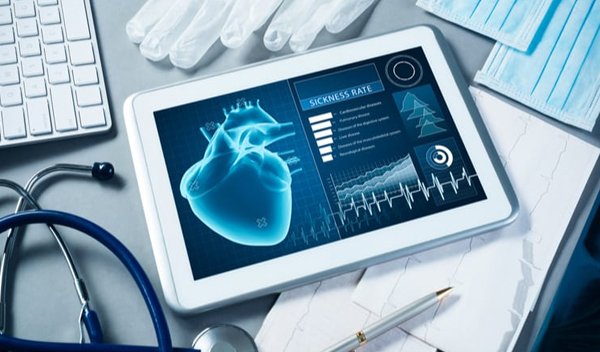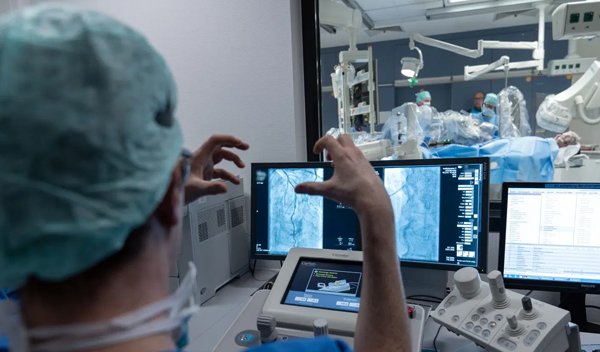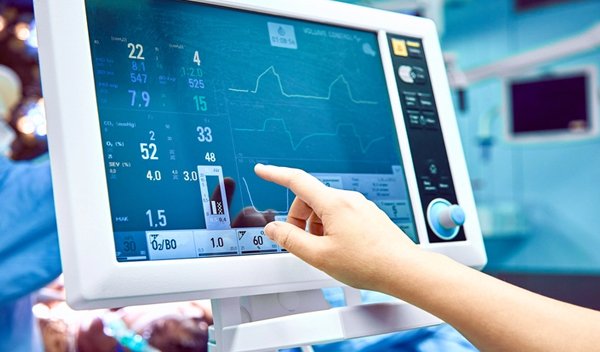5 Recent Inventions As Part of cardiovascular technology
Techdigitalweb – Recently, cardiovascular technology presents us with some new inventions. The trends allow us to make us improve the techs. The observations in 2020 enable most people to take advantage of them.
The new cardiac technologies will take an essential role in clinical practice. Besides, it will become a primary thing for health items in the near future. Here are some technologies for our references.
Cardiology Artificial Intelligence

The hottest topic discussed for technology advancement is Artificial Intelligence. It has become the most popular topic found in all medical conferences.
Artificial intelligence or AI has developed in many sectors, including health, in the past couple of years. This invention has become the newest iteration that forms to be machine learning (ML). Therefore, this item becomes well known quickly.
Nowadays, science fiction or far-fetched research projects keeps the improvement of AI for Cardiology. It is supported by the clearance gained from the U.S. Food and Drug Administration market or FDA. So, the world can see its positive side.
Some elements are already being used for a long time, although some clinicians do not know it. AI in cardiovascular technology is being integrated thoroughly into the backend of cardiology and radiology. It applies to IT and reporting systems that are helping to support the speed of work.
Transcatheter Mitral and Tricuspid Valve Interventions
TAVR stands for transcatheter aortic valve replacement that will be used in 2019. The FDA supports this approval for all patients with surgical risk categories.
The specified item is beneficial as the final step as the opening procedure for all patients. It makes a new standard of care that is mainly for cardiac patients.
From clinical study data, TAVR can be better than surgical valve replacements. Besides, it is being performed for patients on the same day as the procedure applied to some centers.
Through this data, experts can predict its performance. By 2025, TAVR can perform 75 percent of aortic valve replacements.
The success in TAVR brings cardiologists’ attention to other tools development. It is rapidly shifted into transcatheter mitral valve repair and replacements (TMVR). Besides, we can see it also from transcatheter tricuspid valve repair and replacements (TTVR).
Wearable Technologies Aid Patient Monitoring

The development of this tool can be seen from smartphones. We know that most people carry a smartphone nowadays. Aside from that, other wearable devices support cardiovascular technology.
These devices can track people’s health, such as Apple Watch or Fitbit devices. Because of that, these devices are used by consumers and even healthcare professionals. They are better at monitoring patient health.
The tools can replace an annual visit. They present patients with the health tracking information required. Thus, it is available 24/7 for the entire year.
Wearable devices are combined with smart software and AI. It has algorithms that are beneficial to detect high heart rate abnormality or other factors that can alert patients to contact their doctors.
In cardiovascular technology, this invention can be a consumer early warning. It plays a crucial role in the coming years and will automatically triage patients. It gives an advantage for them in knowing when they need professional health care help.
Because of its efficient benefit, most healthcare systems are integrated with wearable devices. They use it for remote patients that require monitoring programs.
Some of the professional-grade wearables even replace traditional Holter monitors. It has inexpensive stick-on ECG monitors. So, consumers can value its benefits in their daily lives.
Besides, some hospitals also apply these wearables and consumer-grade devices. They use wireless scales, glucose monitors, and blood pressure monitors that are connected to smartphone apps.
Thus, this wearable cardiovascular technology can track cardiac rehabilitation and heart failure patients remotely.
Cardiology Virtual and Augmented Reality
The professional knows it as AR or Augmented Reality and VR or Virtual Reality. Nowadays, several large cardiology device vendors use it for training their staff.
VR headsets help to present with preloaded live electrophysiology devices mainly for the implant cases. The device offers users a 360-degree view. This procedure has become the key opinion to give the leader their advice.
Moreover, it helps to explain what to do during the case. It can function as a virtual physician that can monitor the patient. Thus, it helps to speed up handling the patients.
During the training, the VR headset set the operators in a virtual cath lab. In there, they can have a 360-degree room view with 360 degrees. It includes the equipment performing the image.
The surgeons have to wear an augmented reality headset. Then, they can superimpose, including co-register a CT or MRI dataset applied onto a patient. So, they can virtually slice the patient and do the pre-plan procedure.
Besides, this device can also mark the patients’ skin. Later on, the surgeon can know the underlying tissues for the incisions.
Robots in the Cath Lab

Improvement in cardiovascular technology also marks robotic catheter navigation systems. It is used for the electrophysiology (EP) lab and the cardiac cath lab.
Although it has been several years since the device was used, the system is still not familiar. Then, it bears a question of whether these systems can help to improve the outcomes or not. Most experts doubt its function due to the higher cost.
There is another consideration in applying these systems. They allow operators to remote control the manipulation of catheters. Therefore, the operators can be out of the radiation field.
They should take off their heavy lead aprons. Then, they can sit in a control cockpit and operate it. However, this procedure can take a longer duration and become more complex.
Because of that, these systems are applied as an alternative. The increasing cumulative radiation dose in operators has become the primary concern in applying these systems.
We can also find another robotic contender that is French-based Robocath. The vendor has European CE that can mark clearance for PCI.
This robot has become the first system performing these systems. Therefore, cardiovascular technology developments grow well at centers in France and Germany.

